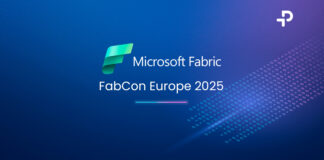The culture of innovation relies, in large part, on the positive appreciation of disruption and distortion.
With the fourth industrial revolution, the one we are in today, i.e. digital transformation, we have ushered into a system where much of what made us strong yesterday is precisely what is weakening us today. While innovation does push back the boundaries of things and places, it also changes the meaning of words. And such a change in meaning can be seen in this one specific word, a term that has become one of the key words of the digital revolution: the term is “experience.”
The meaning of “experience” used to allude to the industrial sector (a good employee needed to have experience), whereas the term now almost exclusively refers to the heart & soul of the shopping process (the consumer lives the experience of getting acquainted and engaging with a brand or product).
Experience: it is all about meaning
It was an old word. It suggested long periods of time, painstaking work and effort, gaining mastery in a manual skill or in decision making all garnered over a significant period of time: working consisted in acquiring experience. And “having experience” meant having spent the required time doing, redoing and excelling in a skill. Experience was a guarantee: a guarantee that a person who has spent a certain amount of time in a given field or practice was much more well- versed than someone who did not. Experience is what sets apart a qualified worker from an apprentice: an apprentice acquires experience. What is a CV (which literally means a “course of life”) if not a document certifying the experience one has acquired? Experience was perceived as a positive professional timeline: the time it took to acquire, soak in and hone one’s skills to perfection.
For a very long time therefore, we have appreciated experience as a basic logical equation stipulating that more and more experience equals better performance and efficiency. Well that is no longer true! Experience, as a metric for professional proficiency developed over time, which was a person’s track record and represented their potential value on the market for a given position, is nowadays not the only performance metric around. In fact, experience, like other acquired skills, is even likely in certain fields, to be a disadvantage for the person looking to leverage that experience. In today’s society where innovation has become this permanent dynamic, praising change as an imperative need, experience is synonym for ‘traditional’ or ‘immobility’: it suggests something of the past. Of course, in certain fields experience is here to stay and cannot be replaced: i.e. in the medical field, in surgery or management for instance. But many of what used to be bastions of human experience are being challenged by the outstanding performance levels of robotics and machinery. This suggesting that a new form of cooperation, unheard of before, is to be expected in the future – and likely beneficial if well orchestrated – between experience and creativity, i.e. between tradition and creation.
Nevertheless, experience is at the heart of the innovation dynamic. It is even one of the key notions. But in actual fact it is not the same experience we are referring to. Experience today, far from the old meaning, refers largely to a sense of astonishment and discovery. The evolution of the word even goes as far as depicting the true nature and philosophy of what innovation is. The term describing the perfect execution of a habit and acquired know-how, has become one of the main innovation markers now describing the utmost in novelty and in embracing the unprecedented. The term is to be understood as the way we feel things: experience as an empirical proof of sensation. Where experience once meant putting in the hours, practicing over and over, in order to perfect a manual skill as smoothly as possible, it is now akin to the meaning of ‘causing turbulence.’ Today, it is all about providing a stellar consumer journey when engaging with a brand or product (digital contents, stores, events, technical support…): navigating smoothly and easily so that satisfaction, a criterion that is constantly measured, is at its best.
The two meanings of experience refer to a journey but two different kinds of journeys: one relates to giving up one’s immaculate slate for a lifelong skill building itinerary and the other is a shopping spree where you actually need to embark with a clean slate for a wild and unexpected ride.
Before, you acquired experience and today, you live an experience. It used to be about knowledge (or know-how); it is now all about emotion.
Consumer experience: a journey full of surprises
What we call experience today is not about reproducing one’s skill set indefinitely but it is the exact opposite: it is the “wow effect” of novelty. It is the sensual encounter between a consumer and a product or service at every touchpoint of the brand’s customer journey. By definition, that same experience cannot be reproduced indefinitely and needs to be enhanced and “rejuvenated” lest the product or service gets perceived as “passé.” Indeed, every user experience needs to be reinvented to reignite that magical effect of the product or service. And this is required even if the innovation at hand is not disruptive but stems from incremental and continuous improvements.
Thus, the resulting user experience that a brand provides its customers, through its products and services, is an ever more omni-sensory journey. The consumer experience is actually thought up as an actual journey (Customer Experience Journey), a highly emotional journey with every step of the way having to be memorable. This “customer journey” applies both to in-person shopping experiences (brick-and-mortar stores) and online shopping experiences (posting content across its different communication channels and touchpoints: websites, Facebook, Instagram, Twitter, blogs, and so on).
It is like engaging a “first-time” customer in a way, because the “wow” effect can only work with new encounters. Being able to renew the user experience comes down to exposing the customer to novelty, refreshing his journey, i.e. emotionally engaging the customer with content, products or services provided by a brand.
This new meaning of the word “experience” has taken over the central notion or idea of usage. And this shift, for a large part, is to be applauded because it contributes to putting the human being at the heart of the innovation dynamic.
Emotionally engaging your customers: the most rational choice
We have finally realized that economic players are not just rational beings behaving coldly and perfunctorily, but people with feelings. Introducing the Consumer Experience at the core of the economic model changes everything irreversibly. Experience, now being the main and most important focus, underscores that the most reliable economic trigger is emotion. So being realistic today means trusting a once, very unstable criterion, upon which to establish a commercial approach.
The emotion felt or experienced by a consumer is a way for a brand to develop brand stickiness. The challenge for manufacturers is to figure out the right customer-centric strategy that will generate and drive that emotion. It is all about the 4 “Es”: Experience (a memorable journey at every touchpoint), Emotion (the “wow” effect that the brand delivers), Engagement (consumers feel understood & relate to the brand), Exclusiveness (consumers feel special). Because consumers are spoiled, informed, sometimes too informed, swamped with information – and are easily jaded as a result –, they now call the shots and switch from brand to brand as they please. Customer loyalty is therefore hard to come by. You need to captivate to convince; and drawing their attention is becoming even more challenging with the increasing number of offerings and services of all kinds cropping up everywhere. Now, more than ever, manufacturers need to foster and develop a very strong relationship with each of their existing and potential customers. Only a stellar and unique experience can help tip the scale. Moreover, all things being equal, a unique customer experience drives more business. The challenge is even greater in an era where time is no longer a linear concept, where work and personal life are more and more intertwined with all our traditional bearings becoming increasingly fickle.
Maximizing the customer journey and experience is pivotal in developing customer loyalty. Providing a unique experience and delivering on your brand promise, way beyond the expected market standard, is the linchpin of consumer satisfaction. Consumer satisfaction must be guaranteed across the entire buy-in cycle from the discover phase to the loyalty phase. We know that emotionally engaged consumers are more loyal to a brand and are likely to become advocates enthusiastically promoting the brand. The tools and the talent are available to reach this objective. Willpower does the rest.
Emotion is one of the most powerful triggers of a human being and leveraging that aspect with a consumer experience strategy is perfectly rational from an economic standpoint. So kidding aside, let’s take emotions seriously.
Article initially published in Journal du Net






